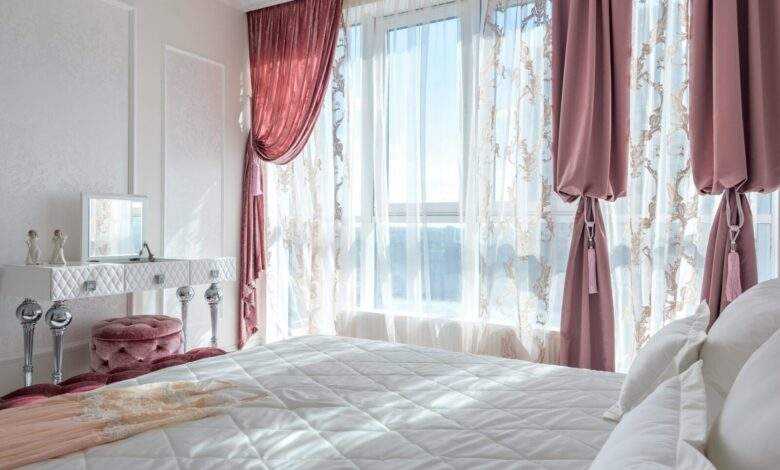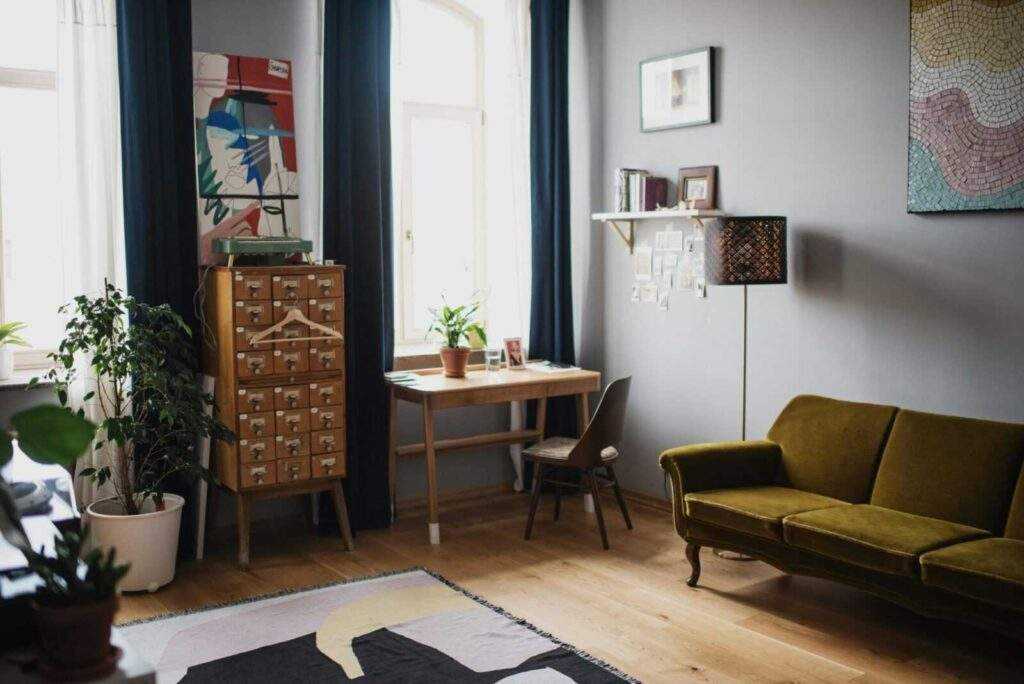Natural Light Magic: 10 Strategies for Maximizing Natural light in Home

Table of Contents
Imagine waking up to the gentle kiss of sunlight on your face, feeling instantly energized and ready to greet the day. Natural light isn’t just about aesthetics; it’s a powerful force that can transform your home into a haven of well-being and vibrancy. In this guide, we’ll unveil the magic of natural light, exploring its numerous benefits and equipping you with a toolbox of practical strategies.
Whether you’re yearning for a brighter living room, a more cheerful kitchen, or simply a way to boost your mood, this guide will illuminate the path forward. Get ready to discover how simple adjustments, clever design choices, and a touch of creativity can bathe your home in the warm embrace of natural light.
Natural Light Solutions for Small Apartments
Maximizing natural light in small apartments can significantly enhance the ambiance and functionality of your living space. Choosing light-colored paints is one of the most effective strategies. Opting for shades of white, pale blue, or soft gray not only reflects more sunlight but also makes rooms appear more spacious and airy. These best paint colors for natural light create a bright and welcoming environment.
Minimalist furniture arrangements are another crucial element. By reducing clutter and selecting sleek, low-profile furniture, you allow more light to flow freely through the room. This approach not only maximizes sunlight but also contributes to a more open and organized living area. Incorporate light-reflecting surfaces such as glass or mirrored furniture to further amplify the brightness.
Strategic mirror placement can play a pivotal role in enhancing natural light. Position mirrors opposite windows to reflect sunlight throughout the room, effectively doubling the amount of natural light. Large mirrors or mirrored panels can be particularly beneficial in small spaces, as they create an illusion of depth while distributing light evenly.
Furniture positioning is also key to optimizing natural light. Arrange seating and other significant pieces away from windows to avoid obstructing light sources. Instead, place them in a way that allows sunlight to penetrate deeper into the room. For instance, positioning a sofa or bed perpendicular to the window can help maintain an unobstructed flow of light.
Utilizing sheer curtains can further enhance the natural light in your apartment. These lightweight fabrics allow sunlight to filter through while providing privacy. Sheer curtains soften the light, creating a warm and inviting atmosphere without compromising on brightness.
Incorporating light-reflecting accessories such as metallic or glass decor can also contribute to a well-lit environment. These elements bounce light around the room, making it feel more vibrant and spacious. Additionally, consider using light-colored rugs and throws to complement the overall bright and airy aesthetic.
By thoughtfully selecting paint colors, arranging furniture, and incorporating reflective surfaces, you can transform even the smallest apartment into a bright and inviting space. These natural lighting ideas not only enhance the visual appeal but also promote a more comfortable and enjoyable living environment.
How to Trim Trees for More Sunlight
Enhancing the natural light in your home can be significantly achieved through strategic tree trimming. Selective pruning, a targeted approach to removing specific branches, allows more sunlight to penetrate your living spaces, brightening even the darkest rooms. This method not only increases sunlight in your living room but also contributes to the overall aesthetic of your landscape.
The best times of year to trim trees are during the dormant seasons, typically late winter or early spring. During these periods, trees are less susceptible to stress and disease, making it the optimal time for pruning. Proper timing ensures that the trees recover quickly and continue to grow healthily.
Essential tools for tree trimming include pruning shears for smaller branches, loppers for medium-sized limbs, and a pruning saw for larger branches. Each tool plays a crucial role in ensuring clean cuts that promote healthy regrowth. Additionally, using a pole pruner can help reach higher branches without the need for a ladder.
While DIY trimming can be a cost-effective solution, it’s important to recognize when to hire a professional arborist. For large trees or branches near power lines, professional help ensures safety and proper technique. Arborists are trained to assess the tree’s health and execute trimming that maximizes sunlight without compromising the tree’s structure.
Safety precautions are paramount when trimming trees. Always wear protective gear such as gloves, safety glasses, and a hard hat. Ensure your tools are sharp and in good condition to prevent accidents. If using a ladder, make sure it is stable and positioned on solid ground. Never attempt to trim trees during adverse weather conditions.
By following these guidelines for tree trimming, you can effectively increase the natural light that enters your home, creating a brighter and more inviting atmosphere. Whether opting for DIY or professional services, proper tree maintenance is key to maximizing sunlight and reaping the benefits of a well-lit interior.
Best Indoor Plants for Low Light
Indoor plants can significantly enhance the aesthetic appeal and air quality of your home, even in low-light conditions. Certain plant species are well-suited to thrive in areas with minimal natural light, making them ideal for darker rooms or spaces with limited windows. Among these, the Snake Plant, ZZ Plant, and Pothos are some of the top choices for low-light environments.
The Snake Plant, also known as Sansevieria, is renowned for its sturdy, upright leaves and minimal care requirements. It thrives in indirect light and can tolerate long periods of neglect, making it perfect for beginners. To care for a Snake Plant, water it sparingly—allow the soil to dry out completely between waterings to prevent root rot. It prefers well-draining soil and can be placed in darker corners of your home where it will still flourish.
Another excellent option is the ZZ Plant, or Zamioculcas zamiifolia. This plant is famous for its glossy, dark green leaves that brighten up any space. The ZZ Plant is highly drought-resistant and prefers infrequent watering, much like the Snake Plant. It can survive in low-light conditions, but placing it in a spot with indirect sunlight will help it grow more robustly. Use a well-draining potting mix and ensure that the plant is not sitting in water to avoid root issues.
Pothos, also known as Devil’s Ivy, is a versatile and attractive plant that can thrive in low-light settings. Its heart-shaped leaves can help to make a room brighter naturally, even in the absence of plentiful sunlight. Pothos requires moderate watering—keep the soil moist but not waterlogged, and it will flourish. This plant is also known for its air-purifying properties, making it a healthy addition to any interior space. Hanging baskets or shelves are ideal placements to showcase its trailing vines.
Incorporating these plants into your home not only adds a touch of greenery but also contributes to better air quality and a more inviting atmosphere. By choosing the right plants and following proper care routines, you can enjoy the benefits of natural light interior design, even in the shadiest corners of your home.
DIY Light Shelves for Windows
Light shelves are an innovative and effective way to maximize natural light in your home. They work by reflecting sunlight deeper into your living spaces, which can brighten a dark room and provide an even distribution of light. By creating DIY light shelves, you can enhance the natural light benefits, making your home feel more open and inviting.
To create your own light shelves, you will need the following materials: reflective surface (such as white-painted wood or acrylic), brackets, screws, a drill, measuring tape, and a level. Begin by measuring the width of your window to determine the size of your light shelf. The shelf should extend approximately 12-24 inches from the window to effectively capture and reflect sunlight.
Once you have your measurements, cut your chosen reflective material to size. If you are using wood, ensure it is painted white or a light color to maximize sunlight reflection. Attach the brackets to the wall above the window, ensuring they are level and securely fastened. Place the light shelf on the brackets and secure it with screws. The shelf should be angled upward slightly to reflect light upwards and further into the room.
Light shelves are particularly effective in rooms with south-facing windows, as they receive the most sunlight throughout the day. By installing light shelves, you can increase sunlight in the living room or any other space, making the room brighter naturally. Additionally, light shelves can reduce the need for artificial lighting, which can lower energy costs and create a more sustainable living environment.
Beyond their practical benefits, light shelves also contribute to natural light interior design, enhancing the aesthetic appeal of your home. They can complement other natural lighting ideas, such as the use of sheer curtains, light-reflecting surfaces, and strategic mirror placement for light. By incorporating light shelves into your home, you can enjoy a brighter, more comfortable living space that fully capitalizes on the best windows for natural light.
Best Skylight Brands for Homes
Skylights are a fantastic addition to any home, significantly enhancing the natural light interior design and providing numerous benefits. Selecting the right brand is crucial for ensuring energy efficiency, durability, and ease of installation. This section reviews top skylight brands, comparing their features and suitability for different types of homes.
Velux is widely regarded as a leading skylight brand, known for its commitment to quality and innovation. Velux skylights are designed with energy efficiency in mind, featuring double-glazed glass and UV protection to help regulate indoor temperatures. Their products are easy to install, with many models offering solar-powered options. Customers often praise Velux for its robust construction and longevity, making it a top choice for homeowners looking to maximize sunlight.
Andersen Windows offers a range of skylights that seamlessly integrate with their window products. Known for their superior craftsmanship, Andersen skylights are built to last and provide excellent insulation properties. Their models come with high-performance glass options that minimize heat loss and reduce glare, making them ideal for brightening a dark room without compromising energy efficiency. Homeowners appreciate the seamless design and the brand’s strong warranty.
Fakro is another reputable brand, offering skylights that balance style and functionality. Fakro skylights are recognized for their innovative features, such as automatic venting and rain sensors, enhancing the natural light interior design while ensuring comfort and convenience. The brand’s products are praised for their durability and ease of installation, with many models suitable for various home styles, from contemporary to traditional.
Sun-Tek focuses on affordability without sacrificing quality. Sun-Tek skylights are designed for easy DIY installation, making them a popular choice for budget-conscious homeowners looking to increase sunlight in their living rooms. Despite their lower price point, these skylights offer good energy efficiency and durability, with many positive customer reviews highlighting their performance and value.
Expert opinions often highlight the importance of selecting skylights that align with your home’s specific needs, including roof type and climate conditions. When choosing the best skylight for natural light, consider factors such as energy efficiency, ease of installation, and long-term durability to ensure you make a well-informed decision.

How to Use Mirrors to Reflect Sunlight
Mirrors are an effective and stylish way to amplify natural light in your home, creating a brighter and more welcoming environment. The principle behind using mirrors to enhance natural lighting is simple: mirrors reflect and distribute sunlight throughout your space, effectively doubling the light that enters the room. This can be particularly beneficial for rooms that receive limited direct sunlight.
To maximize the benefits of mirrors, strategic placement is crucial. Position mirrors opposite or adjacent to windows to catch and reflect the maximum amount of sunlight. For instance, placing a large mirror opposite a south-facing window can significantly brighten a dark room by reflecting the sunlight deeper into the space. Additionally, arranging a series of smaller mirrors on a wall can create a mosaic effect, dispersing light in various directions and adding a unique design element.
Size and style of mirrors also play a pivotal role. Larger mirrors naturally reflect more light, making them ideal for spacious living rooms or dining areas. Frameless mirrors or those with light-colored frames can blend seamlessly with any decor, while decorative mirrors with intricate designs can serve as statement pieces that enhance your interior design. Round or oval mirrors can soften a room’s aesthetic, while rectangular or square mirrors provide a more structured look.
Creative mirror arrangements can further enhance both light and interior design. For example, placing mirrors behind lighting fixtures such as table lamps or sconces can amplify the light emitted, creating a more luminous atmosphere. In narrow hallways or small entryways, a well-placed mirror can make the space feel larger and more inviting. Additionally, mirrored furniture, such as coffee tables or cabinets, can reflect light from various angles, contributing to a brighter and more dynamic living space.
Incorporating mirrors into your home’s design not only maximizes sunlight but also adds a versatile element to your decor. By carefully considering placement, size, and style, you can transform even the darkest rooms into bright, cheerful spaces that benefit from the beauty and warmth of natural light.
Natural Light Benefits for Mental Health
Natural light has a profound impact on mental well-being, influencing mood, productivity, and sleep patterns. Exposure to natural light stimulates the production of serotonin, a hormone that enhances mood and helps alleviate symptoms of depression and anxiety. According to research published in the Journal of Affective Disorders, individuals who receive adequate sunlight exposure experience lower levels of depression and improved mental health outcomes.
Productivity also sees a significant boost with increased natural light. A study by the Swiss Federal Institute of Technology found that workers in naturally lit environments reported higher levels of alertness and focus compared to those in artificially lit settings. Natural light helps regulate the body’s circadian rhythms, aligning energy levels with the natural cycle of the day and enhancing overall productivity.
Quality sleep is another critical benefit of natural light exposure. The Journal of Clinical Sleep Medicine published findings indicating that natural light helps synchronize the body’s internal clock, promoting better sleep patterns. This synchronization not only improves sleep quality but also increases daytime energy and alertness.
Maximizing exposure to natural light in daily routines can be achieved through practical strategies. Incorporating light-reflecting surfaces, such as mirrors and glossy finishes, can distribute sunlight more effectively throughout a room. Sheer curtains allow sunlight to penetrate while maintaining privacy, creating a bright and inviting atmosphere. Additionally, placing workspaces and relaxation areas near windows ensures consistent exposure to natural light, enhancing both productivity and well-being.
Considering natural light interior design principles can make a room brighter naturally. Opting for skylights for homes can significantly increase sunlight in living rooms or any other space. Selecting the best paint colors for natural light, typically lighter shades, can amplify the brightness. Thoughtful landscaping for more sunlight, such as trimming trees or positioning reflective surfaces outside, further enhances the inflow of natural light into your home.
Best Window Treatments for Natural Light
When it comes to maximizing natural light in your home, selecting the right window treatments is essential. The goal is to allow ample sunlight to flood the room while maintaining privacy and energy efficiency. Sheer curtains are a popular choice, as they gently diffuse sunlight, creating a soft, luminous effect that brightens a dark room without compromising privacy. They are available in various materials and styles, making them a versatile option for different interior designs.
Another excellent option is light-filtering blinds. These blinds are designed to let in natural light while providing a degree of privacy. They come in various materials, such as bamboo, which adds a natural, organic touch to your decor, or fabric, which can be matched to your existing color scheme. For those looking for a balance between light control and insulation, cellular shades are an ideal choice. Their honeycomb structure traps air, enhancing energy efficiency while allowing sunlight to permeate the room.
Plantation shutters are also a great alternative for maximizing sunlight. Their adjustable louvers enable you to control the amount of light entering the room, and they offer excellent insulation properties. These shutters come in a variety of materials, including wood and composite, catering to different aesthetic and functional preferences. For homes in hotter climates, solar shades are particularly effective. They reduce glare and block harmful UV rays while still permitting a significant amount of natural light to brighten your space.
When selecting window treatments, consider the orientation of the room. East-facing rooms benefit from treatments that can block the intense morning sun, while west-facing rooms need options that can mitigate the harsh afternoon light. Additionally, the climate plays a crucial role in your choice; in colder regions, insulated window treatments help retain heat, whereas in warmer areas, those that reduce heat gain are more beneficial.
Ultimately, your personal preferences and the specific needs of each room will guide your decision. By carefully choosing the right window treatments, you can enhance the natural lighting in your home, creating a brighter, more inviting space.
Natural Light Considerations for New Home Builds
Incorporating natural light into the design of a new home is a crucial step that can significantly impact both aesthetics and energy efficiency. When planning for natural light, it is essential to collaborate closely with architects and builders to ensure that design elements and layouts are optimized for maximum sunlight exposure.
One of the primary considerations is the orientation of the home. Positioning living spaces such as the living room and kitchen where they receive the most sunlight during the day can make a significant difference. South-facing windows, for instance, are excellent for maximizing sunlight in these areas. Additionally, large, strategically placed windows can enhance the influx of natural light. Opt for floor-to-ceiling windows or bay windows in key areas to further brighten a dark room and create an inviting atmosphere.
Skylights for homes are another effective architectural element for increasing natural light. They can be installed in various parts of the house, such as hallways, bathrooms, and even kitchens, to allow sunlight to penetrate deeper into the interior spaces. Skylights also help in creating an open and airy feel, making rooms appear larger and more welcoming.
Glass doors, particularly sliding or French doors, are excellent for integrating natural light into your home. They not only provide an elegant aesthetic but also allow sunlight to flood into rooms from multiple angles. When paired with sheer curtains, these doors can help maintain privacy while still allowing light to filter through.
In terms of interior design, incorporating light-reflecting surfaces such as mirrors and glossy finishes can help to bounce light around the room, amplifying the natural light available. Additionally, selecting the best paint colors for natural light, such as whites, soft pastels, and light neutrals, can enhance the brightness and spaciousness of a room.
Working with professionals who understand the importance of natural light in home design is essential. Ensure that architects and builders are on the same page regarding your natural lighting ideas and goals. This collaboration will help create a living space that is not only aesthetically pleasing but also energy-efficient and comfortable.
Choosing the Right Blinds for Light Control
When it comes to maximizing natural light in your home, choosing the right blinds is crucial. Various types of blinds offer different levels of light control, and understanding their characteristics can help you make an informed decision. Among the popular options are wood, faux wood, and aluminum blinds, each with distinct advantages and disadvantages.
Wood blinds are a classic choice that exude warmth and elegance. They are highly effective in controlling natural light, allowing for precise adjustments to brighten a dark room or create a softer ambiance. However, wood blinds can be more expensive and require regular maintenance to prevent warping or fading due to exposure to sunlight. If you are looking for a natural light interior design, wood blinds can complement your decor beautifully.
Faux wood blinds offer a more budget-friendly alternative while maintaining a similar aesthetic to real wood. Made from composite materials, faux wood blinds are durable and resistant to moisture, making them suitable for areas like kitchens and bathrooms. They also provide excellent light control and are easy to clean. Nevertheless, they might lack the authentic feel of natural wood, which could be a consideration for those prioritizing aesthetics.
Aluminum blinds are another popular option, known for their sleek and modern appearance. They are lightweight, durable, and typically more affordable than wood and faux wood blinds. Aluminum blinds are highly effective in controlling natural light, allowing for fine-tuned adjustments. However, they can be less effective in insulating against heat and cold, which might impact energy efficiency. Additionally, they can be noisy when adjusted and may not convey the same warmth as wood or faux wood blinds.
When selecting blinds, consider your specific light control needs, aesthetic preferences, and budget. For instance, if your goal is to maximize sunlight in your living room, opting for blinds that allow for fine adjustments and have a light, reflective surface can help you achieve this. Alternatively, for a cohesive natural light interior design, matching the blinds to your existing decor can enhance the overall ambiance of your home.
Ultimately, the best blinds for your home will balance functionality and style, ensuring that you can enjoy the benefits of natural light while maintaining control over its intensity and direction.
By embracing natural light in your home, you’re not just creating a brighter space; you’re fostering a healthier, happier environment. From improved mood and increased energy levels to a stronger connection with nature’s rhythms, the benefits are truly enriching.
We hope this guide has empowered you to unlock the transformative potential of natural light. Remember, even small changes can make a significant difference. So, go forth, experiment, and let the sunlight serenade your home! As you bask in the warm glow of natural light, you’ll not only appreciate the enhanced beauty of your space but also feel the positive impact it has on your well-being.
Natural Light Magic: FAQ
This FAQ sheds light on strategies for maximizing sunlight in your home and harnessing the power of natural light.
1. What are the benefits of natural light in the home?
Natural light offers numerous advantages, including improved mood, increased energy levels, a boost in Vitamin D production, and a more spacious feel in your living areas.
2. How can I identify areas in my home that need more natural light?
Pay attention to rooms that feel constantly dark or require artificial lighting throughout the day. Observe the sunlight patterns throughout the day to see which areas receive the least amount of natural light.
3. What are some simple strategies to maximize natural light?
- Sheer curtains: Replace heavy drapes with light, sheer curtains to allow sunlight to filter through.
- Light-reflecting surfaces: Use mirrors strategically to bounce light around the room. Opt for light-colored furniture and paint for improved reflection.
- Declutter windowsills: Remove bulky objects blocking sunlight from entering your home.
4. What about landscaping for natural light?
Strategically trim trees and shrubs that might be casting excessive shade on your windows. Consider planting lower-growing varieties that allow sunlight to penetrate.
5. Are there any window considerations for maximizing natural light?
Larger windows naturally allow more light in. If renovations aren’t feasible, consider skylights or sun tunnels to introduce natural light into specific areas.
6. What are the best paint colors for natural light rooms?
Light and neutral paint colors like white, beige, or light gray reflect natural light more effectively, making rooms appear brighter and more spacious.
7. What are some window treatment options that allow for natural light?
Sheer curtains, Roman shades, and vertical blinds offer light control while still allowing natural light to enter the room.
8. I live in an apartment with limited window options. Are there any solutions?
Utilizing light-reflecting surfaces like mirrors and light furniture is crucial in small spaces. Consider light shelves for windows or strategically placed indoor plants that thrive in low light conditions.
9. Are there any downsides to having too much natural light?
Excessive sunlight can cause fading of furniture and artwork. Consider window treatments that offer UV protection while still allowing natural light.
10. Where can I find more inspiration for natural light strategies?
Interior design websites and online resources offer a wealth of information on maximizing natural light in your home. Look for articles with specific room examples and product recommendations.








